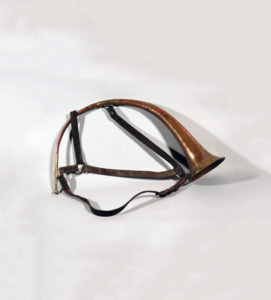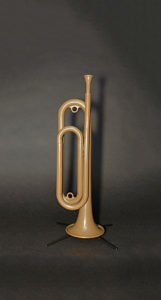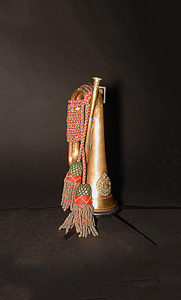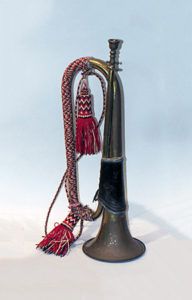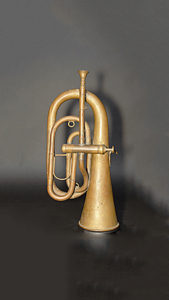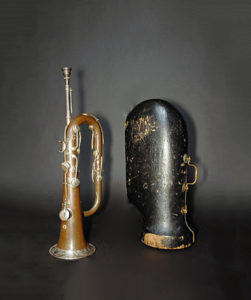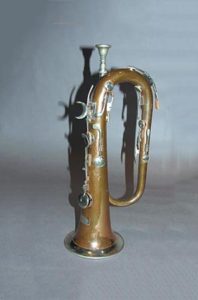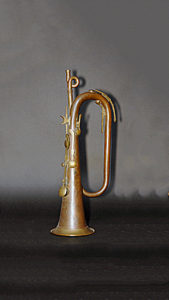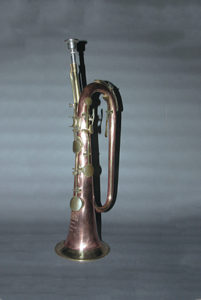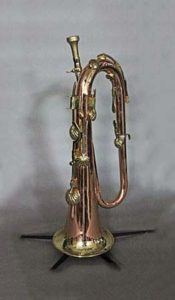Bugles / Keyed Bugles
The bugle developed from early musical, or communication instruments made of animal horns. It is the simplest of brass instruments, usually having no valves or other pitch-altering devices. The word “bugle” itself comes from “buculus”, Latin for bullock. The earliest bugles were shaped in a semicircle some with a coiled crook attachment (detachable piece of tubing). From about 1800 it was once-looped (trumpet shape), then by 1858 the British design, twice-coiled with narrow bell, became official. All pitch control is done by varying the player’s embouchure and the pitch is limited to notes in the harmonic series.
The keyed bugle is a lip vibrated vented aerophone of nineteenth-century Europe. It was patented in 1810 by Joseph Haliday (also spelled Halliday) of Ireland. Today, this invention has been challenged with the claim that 10 years earlier a London instrument maker, George Astor had manufactured a bugle with finger holes and keys (Lasocki 2009, pp. 14-21). Nevertheless, none of his instruments have survived. By 1812, Haliday’s patent added a sixth key and his instrument had come to be known as the Royal Kent bugle.
In 1815, the keyed bugle was introduced to continental Europe and the United States where instrument makers designed and manufactured their own versions of the instrument over the next half century, some with as many as twelve keys. The keyed bugle was an immediate success and was taken up by military bands and concert soloists. Then in 1813 the first patent for a piston valve was filed. By 1865, piston valve instruments had pretty much superseded all vented brass instruments, including the keyed bugle.
Resource: Roger Vetter. keyed bugle · Grinnell College Musical Instrument Collection · Grinnell College Libraries

